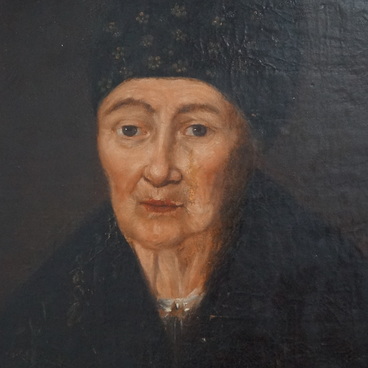Alexander Stupin is the founder of the first provincial art school in Russia, which was opened in 1802 in Arzamas of Nizhny Novgorod region. The collection of the History and Art Museum of the city of Arzamas includes a teaching aid Female head that was used for teaching purposes in the art school.
Teaching aid
Creation period
19th century
Dimensions
10,5x12 cm
Technique
paper, engraving, etching, watercolour
Exhibition
3
Open in app#1
Unknown Author
Teaching aid
#2
#3
The establishment and first years of A.V.Arzamas School coincided with the time when Russian artists and teachers were looking for new ways and methods in art education. Training in the Arzamas School was based on the model of Saint Petersburg Academy of Fine Arts, a higher education institution of the Russian Empire that existed from 1757 till its formal abolishment in 1918. The core disciplines were copying of originals, which were engravings of Russian and West European artists, drawing of sculpture and life drawing.
At the beginning of the 19th century it was extremely difficult to find nude models for painting lessons. As a local history expert Nikolay Schegolkov was writing, Arzamas people were ‘brought up in proven faith, … untouched by the corrupting influence of the West’. This was the reason why at the final stage of their education students were painting not a nude model, but portraits and sketches of dressed people. In future it had an impact on their art, because although portrait as a separate genre was not taught by Stupin, the best works of Arzamas artists belong to this genre.
Instead of independent development of the graduation work’s composition, students of the Arzamas School used to copy an engraving in the technique of oil painting. Among examples of such works there are two graduates’ paintings that are now part of the Nizhny Novgorod State Art Museum collection: Saint Jerome in the Desert, a copy of an Augsburg engraving of the beginning of the 18th century depicting the painting by Jacopo Palma the Younger; and Lot and his Daughters painted after an engraving by Ivan Beresenev of the original painting by Louis Jean François Lagrenée. Nonetheless, Alexander Stupin achieved high results, and works of his students were often displayed at exhibitions in the Academy of Fine Arts and repeatedly awarded with prizes.
At the beginning of the 19th century it was extremely difficult to find nude models for painting lessons. As a local history expert Nikolay Schegolkov was writing, Arzamas people were ‘brought up in proven faith, … untouched by the corrupting influence of the West’. This was the reason why at the final stage of their education students were painting not a nude model, but portraits and sketches of dressed people. In future it had an impact on their art, because although portrait as a separate genre was not taught by Stupin, the best works of Arzamas artists belong to this genre.
Instead of independent development of the graduation work’s composition, students of the Arzamas School used to copy an engraving in the technique of oil painting. Among examples of such works there are two graduates’ paintings that are now part of the Nizhny Novgorod State Art Museum collection: Saint Jerome in the Desert, a copy of an Augsburg engraving of the beginning of the 18th century depicting the painting by Jacopo Palma the Younger; and Lot and his Daughters painted after an engraving by Ivan Beresenev of the original painting by Louis Jean François Lagrenée. Nonetheless, Alexander Stupin achieved high results, and works of his students were often displayed at exhibitions in the Academy of Fine Arts and repeatedly awarded with prizes.
#4
History and Art Museum of the city of Arzamas
read morehide
00:00
00:00
1x
Teaching aid
Creation period
19th century
Dimensions
10,5x12 cm
Technique
paper, engraving, etching, watercolour
Exhibition
3
Open in app
Share
